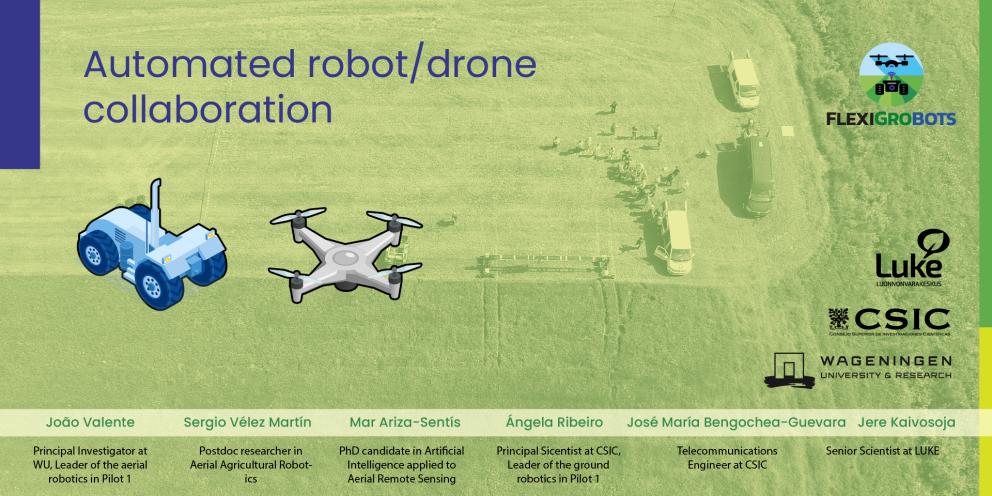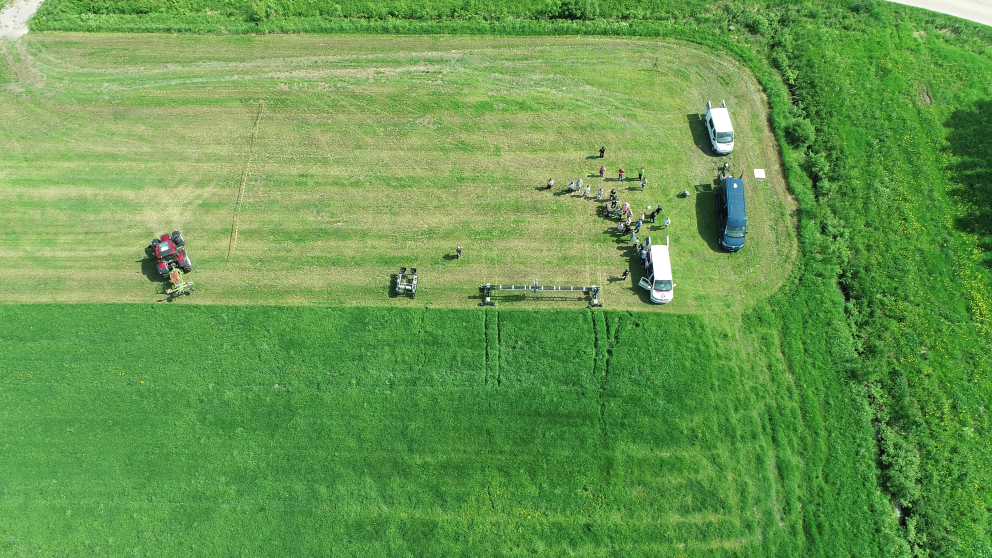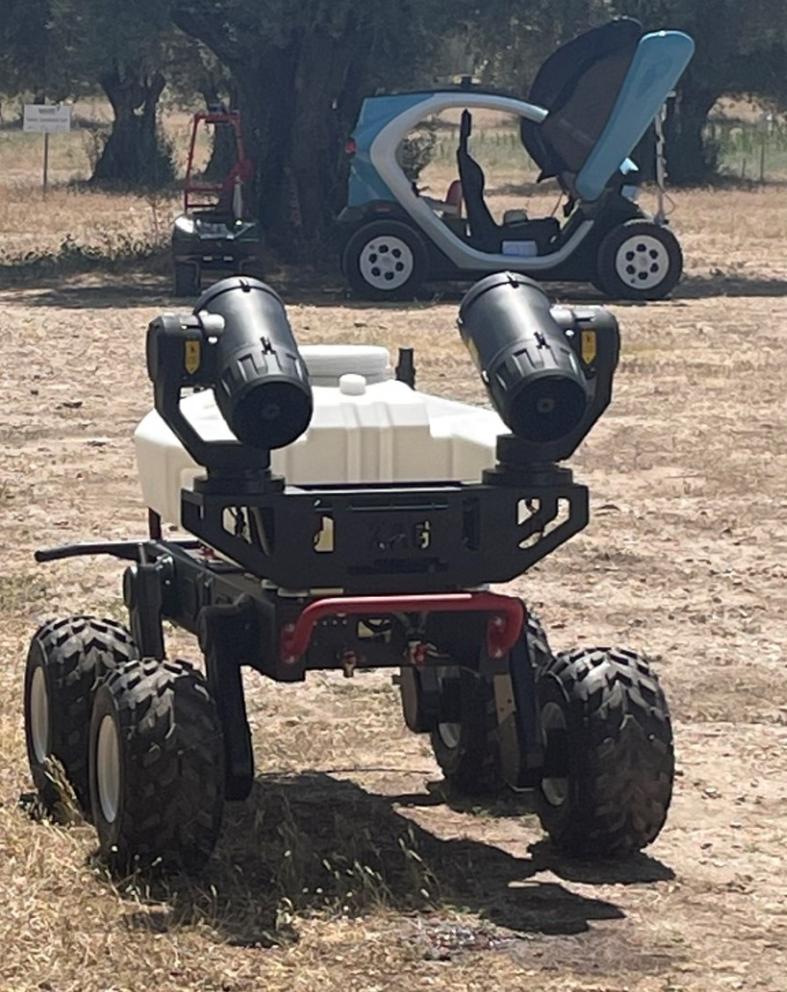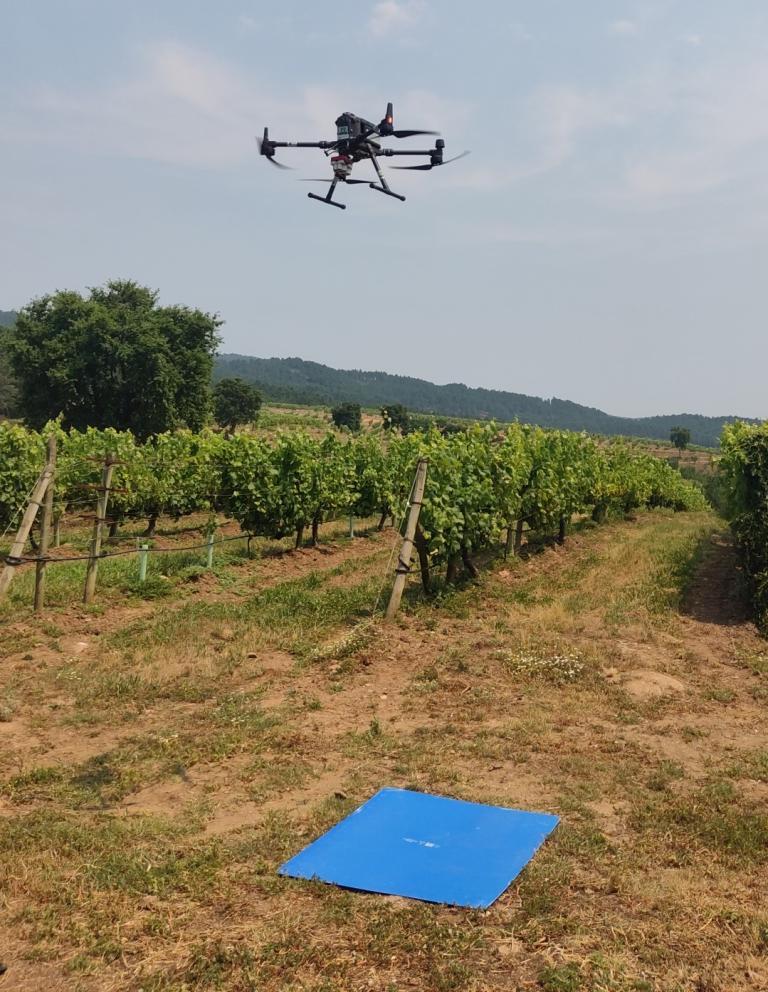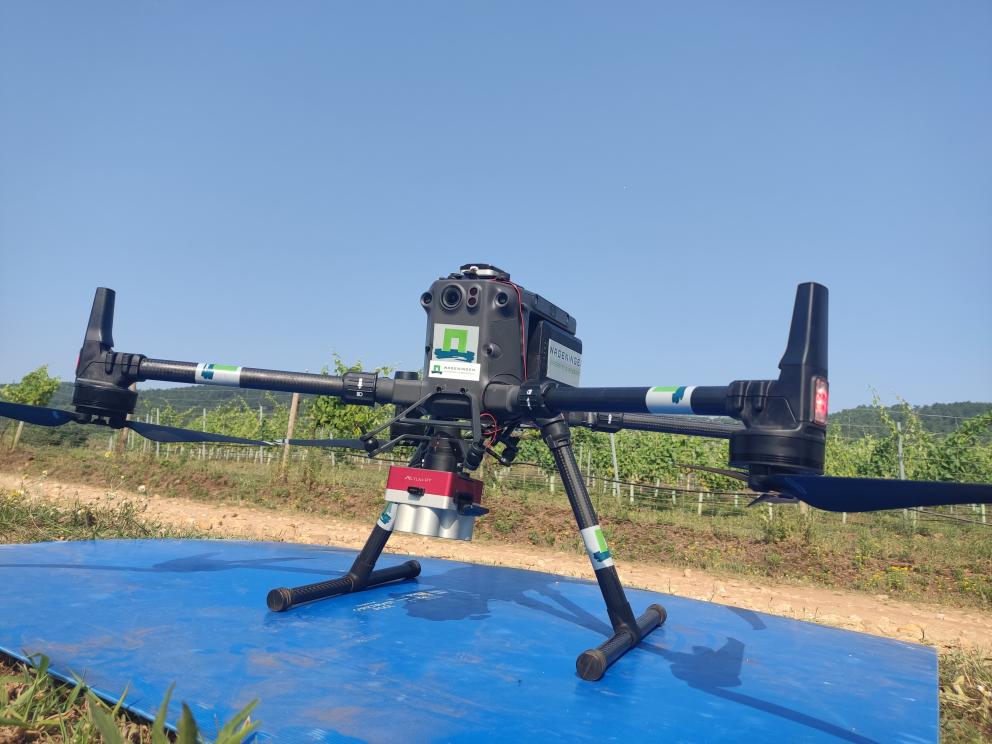The collaboration between aerial drones and ground robots is a key aspect of the Flexigrobots project and a revolutionary step forward in agricultural technology. The innovative approach of combining these two technologies is what enables, among other things, a holistic and detailed analysis of the health and condition of crops
Each platform has its advantages and disadvantages. Thus, ground robots, or unmanned ground vehicles (UGVs), provide a granular and more detailed view of crop fields. They collect information from smaller spaces and therefore require more time to cover the same area as a UAV. They have greater energy autonomy, allowing them to navigate through rows of plants for hours, assessing each plant individually and collecting detailed data on its health and disease status. These robots can be equipped with heavy but advanced sensors and imaging systems, capable of identifying even the most subtle signs of disease or pest damage. Moreover, inspection from a UGV opens up the possibility of simultaneous detection and treatment.
At the same time, aerial drones or unmanned aerial vehicles (UAVs) fly over fields, capturing wider, large-scale data. They are adept at quickly covering large areas, providing a bird's eye view of fields and identifying larger patterns or problems that are not always visible from the ground. Their high-resolution imaging systems are not as accurate as those of UGVs, but they can detect variations in colour or plant growth, which could indicate the presence of disease. Their energy autonomy is closely related to their wingspan, meaning that the larger a UAV is, the more dangerous it is potentially.
The synergy between UAVs and UGVs in the Flexigrobots project represents a novel approach in the field of precision agriculture. The large-scale macroscopic view of the drones combined with the detailed microscopic observations of the ground robots creates a complete picture of the health of the field. In addition, this collaboration significantly reduces the time and resources needed for crop monitoring and disease detection, allowing earlier intervention, more precise treatments and ultimately healthier crops and better yields.





